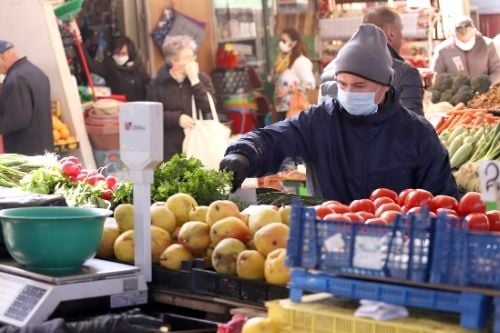

The Consumer Price Index for All Urban Consumers (CPI-U) increased by 1.7% in the 12 months ended January 31, 2021, according to the US Bureau of Labor Statistics. This means that, during the COVID-19 pandemic, the price of goods and services needed for day-to-day living (things like food, clothing, shelter, fuel, transportation, and healthcare services) went up.
CPI is a common way to measure inflation. It is a good economic indicator, showing where prices are going and how much purchasing power a dollar of income has. As such, employers often use the CPI to determine adequate compensation schemes and make cost-of-living wage adjustments. However, the past 12 months have been unique in that the COVID-19 pandemic has triggered unprecedented fluctuation in the US labor market, characterized by job losses, wage freezes, and furloughs.
Read next: Why are commercial insurance prices rising?
The insurance industry has proven resilient against these widespread labor trends. According to Aon and The Jacobson Group’s Semi-Annual U.S. Insurance Industry Labor Market Study, the insurance industry is “holding up much stronger [from an employment standpoint] than the general economy”. In fact, insurers have added almost 20,000 jobs since March 2020, which Gregory Jacobson, CEO at The Jacobson Group, described as “really remarkable”.
He added: “The employment rate in the industry is up 1.2% in the last nine months, so the industry continues to grow. It’s been pretty stable since the early 2000s, and we’re at an employment [rate] that’s considerably higher than any point in our history, even with all the efficiencies that have taken place with technology.”
The positive trends identified by Aon and The Jacobson Group in the insurance labor market could have an impact on compensation, with some sectors of the industry handing out bumper pay rises. This is quite contrasting to the economy in general, according to Jeffrey Rieder, head of Ward Group, a part of Aon focused on insurance performance and rewards practices.
“Overall, the CPI has remained very low - below 2% - since the start of the pandemic. Historically, it’s often between 2% and 3%,” said Reider. “Price pressures are likely to increase in the months ahead.”
However, if the unemployment level remains high – according to the US Bureau of Labor Statistics, it’s currently at around 6.3% in the overall economy, compared to just 2.2% in the insurance industry – that will be seen as limiting wage growth.
Read more: Aon gives lift to global renewables network
“Ultimately, how fast the [general] labor market recovers [will] play a role in the impact of the CPI numbers,” Reider added. “It’s likely that if we see persistently high unemployment overall, that will limit workers’ ability to demand higher wages, which then will limit the degree to which those core CPI numbers will increase. But I think it’s important to note that […] because the insurance market is lower in unemployment and there still remains a very high demand in labor, that could have an impact on compensation that will be perhaps a bit different than what we’ll see in the rest of economy.”
According to Jacobson, the insurance industry is actually seeing something “far in excess of CPI in terms of raises and increases in compensation.” He added that there are some niches within the industry where compensation is “going up dramatically” due to high levels of competition.
He described the pay bumps as “substantial,” adding: “We’re not seeing anything equal to CPI in terms of wages increasing; it’s much higher.”
